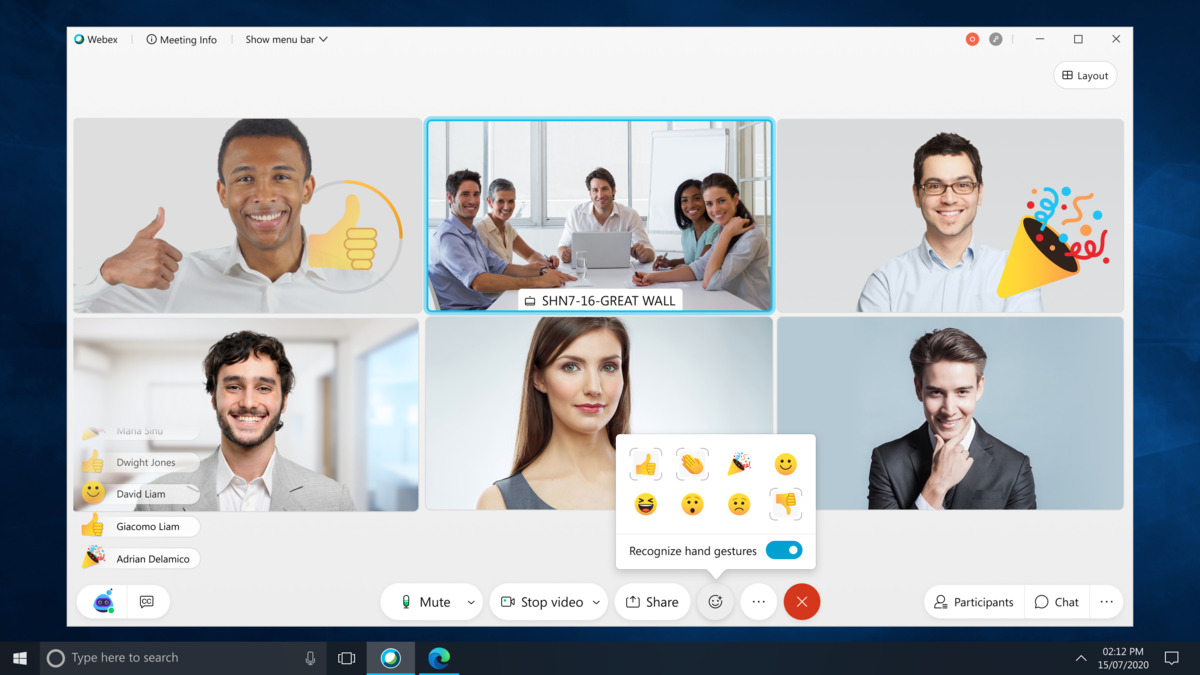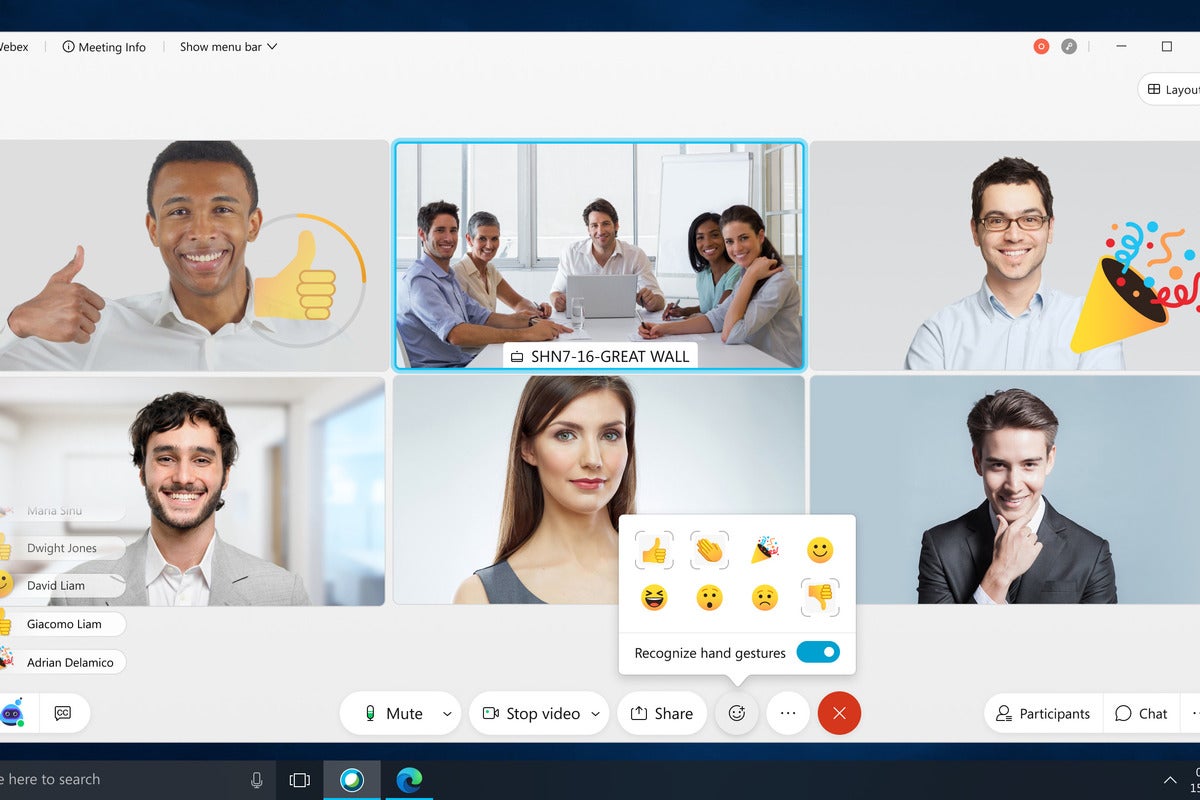
Having announced more than 50 planned innovations at its WebexOne event in December, Cisco’s Webex is rolling out another of those capabilities today: real-time language translation. The feature will be available in Webex as a preview starting this month, with general availability in May.
Users of the platform will soon be able to have their in-meeting speech translated in real time from an expanded library of over 100 languages, including Maori, Zulu and Armenian. The plethora of new languages underlines Cisco’s aim to “power an inclusive future for all.” The feature was initially unveiled with only nine perspective languages in the works.
Jeetu Patel, senior vice president and general manager of security and applications, said Cisco has made “north of a billion dollars” worth of investments in AI, including the acquisition of Voicea in 2019, a company specializing in meeting transcription, voice search, and meeting action items. Without providing specifics, Patel claimed that accuracy rates with real-time transcription are “starting to get exciting.”
A recent report from Metrigy on intelligent virtual assistants found that nearly 24% of participants have meetings that include non-English native speakers, and of these, more than half have been using third-party services to translate meetings, coasting an average of $172 per meeting.
“The inclusive features of Webex help create a level playing field for users, regardless of factors like language or geography,” Patel said in a statement. “Enabling global real-time translations is another step toward powering an Inclusive Future, and an important component of driving better communication and collaboration across teams.”
WebexOne
Today’s launch continues to build on the goal Webex set last year when it unveiled a variety of changes and updates to Webex: “Deliver a Webex experience that is 10x better than in-person [interactions].”
The features unveiled at the virtual event fell into three over-arching categories — seamless collaboration, smart hybrid work, and intelligent customer experiences —are designed to address the needs of a rapidly evolving workplace and better position the company against rivals.
“Webex enables a shift towards hybrid working and less reliance on geography-based hiring, opening the global economy and giving everyone a seat at the table — no matter where the table is,” said Patel during a keynote speech at Cisco’s 2020 WebexOne event.
The December Webex meeting updates
Patel argued in December that many of the new features on Webex aren’t available on competitors’ platforms. Among the changes and new features unveiled then:
- Webex meeting layouts that will be customizable, offering participants options beyond gallery or speaker view.
- New templates that allow users to select the type of meeting they want to host beyond traditional 30-minute time blocks. (Quick-sync meetings can be limited to a few minutes, with a visible countdown clock; round-table meetings allow users to speak uninterrupted for a set time limit in order.)
- Higher-quality video meetings that benefit from noise cancellation, speech enhancement, transcriptions and closed captioning, real-time translation, and more immersive sharing capabilities.
- Finally, in-meeting gestures that can be powered by body movement recognition.
While some features were available immediately, most will arrive this year — including an option for bigger meetings. With Webex Events native live streaming, users will be able to host up to 100,000 active participants.
Zeus Kerravala, founder and principal analyst at ZK Research, was bullish on the changes when they were announced.
“The noise cancellation and speech enhancements greatly improve meetings, not just at home but in the office,” Kerravala said. “Everyone has been in the meeting with the loud typist in an office, the person eating chips or the mower going at the person’s home when they are working from home. Noise cancellation lets people work almost anywhere and not disrupt the meetings.”
He also praised the customizable layouts and the gesture recognition as smart additions, saying they should help drive greater meeting interactions and contributions.
Calling and messaging
Seperately, the company late last year made changes designed to position the platform as more of a direct competitor to Slack, Microsoft Teams and Google Meet. Users of the new Webex will be able to call, meet and message in one app via Webex Teams.
Bringing Webex Meetings and Teams together was “long overdue,” Kerravala said. “Cisco has long talked about maintaining continuous collaboration, and this is a big step in doing that.”
Along with the new messaging capabilities, Cisco added AI features to Webex that allow it to learn what projects, spaces and people are most important, and then elevate them for better visibility. Those features arose from the acquisitions of Voicea, BabbleLabs and Accompany; Cisco said it has spent more $1 billion on AI technology to underpin its Webex Assistant and Webex Graph software.
Webex Calling will get new calling plans and call-routing features such as video-on-hold and interactive voice response; that makes it easier to escalate voice calls to video meetings, the company said. And users will get Webex message pinning, along with the ability to automatically send recorded meetings to specified groups and individuals.
Contact center improvements
In other December announcements, the company touted contact center improvements, a strengthened partner ecosystem and three new hardware devices.
For contact centers, Cisco expanded its platform to support businesses of all sizes, meaning the system can field customer service requests to thousands of virtual agents. It also rolled out a new microservices architecture to enable greater customization, and incorporating text and social channels.
As for the company’s app ecosystem, Cisco said its new App Hub would make integrations with third-party services more unified. The hub allows meeting participants to find and use integrations with services such as Box, Dropbox, Salesforce, ServiceNow and Workplace from Facebook.
“Regardless of the application someone is using, they can work seamlessly with Webex,” Patel said.
In terms of hardware, Cisco unveiled a new Webex Desk Camera, Webex Desk Hub and Webex Desk. Though Zoom and Microsoft have also released videoconferencing and communication hardware, with Zoom for Home and Duo, respectively, neither saw much uptake in 2020. Still, Kerravala said hardware is an important part of communication.
“Cisco still has the largest install base, which is why they haven’t seen the same kind of growth [as other videoconferencing vendors],” he said. “However, they did take a backseat [in 2020] to a few other vendors as consumers flocked to Zoom and others. I think these features can help Cisco catch up and pass the field as it changes the way we think about meetings.”



